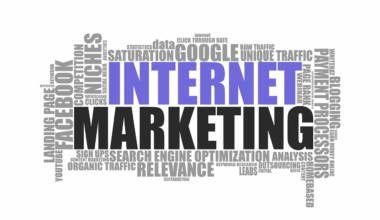The Psychology Behind Emotional Triggers in Viral Campaigns
Viral marketing campaigns often leverage emotional triggers to captivate audiences. Emotions such as joy, fear, sadness, and surprise can be pivotal in encouraging shares and engagement online. Advertisers use these emotions strategically to connect with their audience, forging a bond that resonates deeply. Understanding human psychology allows marketers to create content that evokes strong feelings, compelling users to act. One effective method employed is storytelling, which can make messages memorable and relatable. Stories in campaigns often lead viewers to reflect on their feelings, creating a sense of empathy or nostalgia. When users feel an emotional connection to content, they are likely to share it, increasing its viral potential. Additionally, by harnessing collective emotions, campaigns can go beyond individual experience and tap into shared social sentiments. This connection can lead to social movements, transforming marketing into a force for change. Thus, knowing how to identify and evoke these triggers is crucial. Advertisers should focus on crafting messages that truly resonate, ultimately leading to higher success rates. Through emotional resonance, campaigns can leave a lasting impact that extends beyond initial viewings and engages even broader audiences.
One significant emotional trigger in viral campaigns is the element of surprise. Content that catches viewers off-guard can lead to reactions that are strong enough to prompt sharing. Surprise captures attention quickly, encouraging users to pause and engage. This element can be executed through unexpected twists in stories or humorous punchlines, and it keeps audiences intrigued. Another successful strategy relates to eliciting fear or anxiety, which can prompt immediate action. This tactic has been utilized effectively in public service announcements, where the intention is to raise awareness and drive caution among viewers. Furthermore, joy is an emotion that encourages sharing as it often leads to feelings of happiness and positivity in users. Content that evokes laughter, happiness, or uplifting narratives tends to proliferate on social media. Emphasizing positive experiences allows for greater connection and engagement with the audience. A well-designed campaign will often blend these emotional triggers to maximize effectiveness. By combining elements of surprise, fear, and joy, marketers can enhance the emotional experience for viewers, leading to increased visibility and shares online.
The Role of Social Proof
Social proof stands as a compelling emotional trigger in viral campaigns. People often look to others for validation, especially when making decisions. When users see their peers engaging with content, they are more likely to participate as well. This phenomenon can be particularly effective in encouraging shares and likes across platforms. There are several ways social proof can be effectively utilized in campaigns. Testimonials, user-generated content, or sharing statistics can reinforce credibility. Additionally, endorsements from influencers or public figures can boost engagement significantly, drawing more attention to the content. Providing a sense of community around a campaign leads audiences to feel more involved and connected. For instance, brands that encourage users to share their personal stories or experiences create a platform for emotional expression, reinforcing social connections. When audiences share their journeys, the campaign becomes more relatable and humanized, fostering emotional ties. This relationship is essential in creating loyal brand advocates who are willing to share content. Ultimately, viral campaigns leveraging social proof can establish solid connections that drive further engagement and authentic sharing.
Creating a sense of urgency is another powerful emotional trigger employed in viral campaigns. By instilling urgency, marketers compel users to act quickly, fearing they might miss opportunities. Limited-time offers or countdowns can be effective in stimulating immediate responses. This feeling of urgency can significantly affect audience behavior, prompting them to engage before it’s too late. In conjunction with urgency, campaigns that highlight the potential loss can create a stronger emotional response. Psychologically, people tend to respond more acutely to the thought of losing something rather than gaining it. Emotions tied to loss aversion can prompt users to take action rather than risk missing out. Additionally, leveraging nostalgia can evoke fond memories, strengthening emotional connections. Content that stirs up past experiences often resonates well with audiences, motivating them to share. This connection often leads to social sharing as people want to relive moments with others. Companies harness this nostalgia to evoke feelings from their target audience, crafting campaigns that elicit positive memories. By weaving urgency, loss aversion, and nostalgia together, marketers can create compelling content that encourages greater engagement in viral campaigns.
Empathy and Relatability
Empathy is another essential emotional trigger that influences viral campaigns. Audiences are drawn to content that reflects their feelings or situations, leading to a deeper engagement. When campaigns depict relatable struggles or successes, they create an immediate bond with viewers. This emotional resonance drives sharing, as audiences feel compelled to express their experiences with others. Equally, campaigns can use humor as a vehicle to relate with the audience—laughter fosters connection. Content that showcases shared experiences encourages users to tag friends or share memories. Humor is often disarming, allowing audiences to engage without barriers, making it an ideal emotional trigger. Additionally, integrating inclusive narratives that reflect diversity increases relatability, appealing to broader audiences. Marketers should strive to create content where all individuals feel represented. Campaigns that embrace real stories and authentic voices often generate stronger emotional connections, leading to more shares. Brands that champion relatability leave a memorable impression, increasing the likelihood of engagement. Combining empathy and relatability ultimately cultivates loyalty, transforming audiences into brand advocates who passionately share their campaign experiences with others.
As campaigns evolve, continuous analysis of emotional triggers remains vital to their success. Marketers must adapt and respond to changing sentiments within audiences. Trends in emotional response can shift rapidly, influenced by societal and cultural changes. Moreover, maintaining engagement requires constant innovation and creativity. Testing various emotional triggers may unveil new insights that can enhance campaigns effectively. Content analysis and audience feedback are also essential methods for refining the emotional aspects of marketing strategies. Regularly monitoring engagement metrics provides invaluable data that informs potential adjustments. That being said, it is crucial to keep the audience’s preferences at the forefront of these strategies. Emphasizing genuine connections through emotional storytelling creates a more inviting atmosphere for engagement. Brands that remain sensitive to their audience’s emotions stand a better chance of resonating with potential customers. Over time, successfully integrating emotional triggers will lead to a lasting impact in how audiences perceive brands. Viral campaigns that create connections through strong emotional ties will undoubtedly foster community and shared experiences. The future of digital marketing lies in recognizing and refining these emotional triggers to amplify campaign success.
Conclusion: The Future of Viral Campaigns
In conclusion, understanding the psychology behind emotional triggers in viral campaigns can significantly enhance marketing effectiveness. By strategically tapping into emotions like joy, surprise, fear, and nostalgia, brands can create powerful connections with their audience. It’s not just about getting users to see content but inspiring them to share it widely. The future of viral marketing hinges on an understanding of people’s emotional experiences and how they relate to brand narratives. Marketers should commit to creating content that genuinely resonates while remaining adaptable to emotional changes over time. Sustaining relevance means frequently evaluating and innovating emotional engagement strategies. Successful campaigns will continue to blend authenticity with empathy, cultivating a dedicated audience. Brands that prioritize emotional connections are likely to see increased loyalty and advocacy. As technology advances, opportunities for emotional storytelling will grow, leading marketers to embrace new avenues for engagement. Moving forward, mastering the art of emotional triggers will be essential for any brand that aspires to optimize their presence in a saturated digital landscape. This strategic approach ensures campaigns not only go viral but also create lasting relationships, making a real impact in the lives of their audiences.


